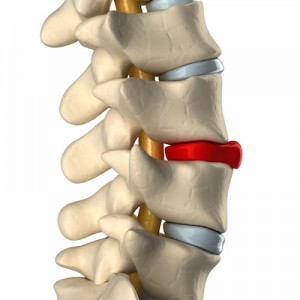As we age, we get used to the idea that aches and pains are just part of the process. But what if they’re not? Our spines control our central nervous system–the nerve network that controls all of our sensations and movements. When the spine isn’t in good shape, aches, pains, and other symptoms can appear in multiple areas of the body.
There are many types of spinal issues that can create the aches and pains that we associate with aging–and one of these is bulging discs. But rather than accept that feeling less than 100% is your new normal, you can improve your spinal health and reduce the symptoms that go along with it by seeking treatment for bulging disc.
What is a bulging disc?
When you hear people talking about bulging discs, they’re referring to “intervertebral discs.” Intervertebral discs are made up of cartilage and fit between each vertebra of your spine, acting as cushions. These discs are made up of two cartilage layers–a soft, cushiony center and an outer, harder layer that contains it.
 In a healthy spine, the outer layer of the disc is strong and contains the disc to fit perfectly between each vertebra. But as the outer, stronger layer of cartilage weakens, the disc can flatten and expand past the edges of your vertebra–also called “bulging.” This can happen as the result of aging, injury or years of neglect.
In a healthy spine, the outer layer of the disc is strong and contains the disc to fit perfectly between each vertebra. But as the outer, stronger layer of cartilage weakens, the disc can flatten and expand past the edges of your vertebra–also called “bulging.” This can happen as the result of aging, injury or years of neglect.
Symptoms of a bulging disc
When bulging occurs, some people experience no symptoms at all. This is because our bodies are built to adapt to change and survive, so they’ll adapt to accommodate this change. But overtime, stress accumulates and our body’s ability to adapt weakens. When this happens symptoms can start to emerge, almost as if out of nowhere.
On the other hand, if a nerve is compressed by the bulging disc, symptoms may surface much sooner.
Symptoms of bulging discs can include discomfort, tingling and pain. The location of these symptoms will depend on the location of the bulge, since symptoms will often radiate to the areas of the body that correspond with the nerves at the site of the bulge. Most bulging discs occur in the lower back (lumbar region). Less frequently, they will occur in the neck (cervical) or upper back. Bulges in the lower back can send symptoms to the buttocks, legs and feet. In the neck, symptoms can appear in shoulders, arms, forearms and hands.
Treatment for bulging disc
Doctors will often tell their bulging disc patients to rest, apply heat, and take over-the-counter medication for relief of these symptoms. However, these approaches only mask the problem. In severe cases, doctors will sometimes even suggest surgery. But bulging discs can often be treated naturally with chiropractic care. Chiropractic adjustments relieve pressure on the nerves by restoring proper motion and position of the spinal bones. This correction will eliminate symptoms.
Also, if chiropractic treatment occurs before permanent damage is done, tissues can often be restored to their normal size and shape.
Many people think that disc problems, like bulging, are just the result of aging. However, maintaining spinal health, even into old age, is completely possible. Give your spine the care and attention it deserves, and those “normal” aches and pains will be a thing of the past.
Contact Parkside Health & Wellness Center today to start better maintaining your spine’s health and to find a natural solution for bulging disc.
